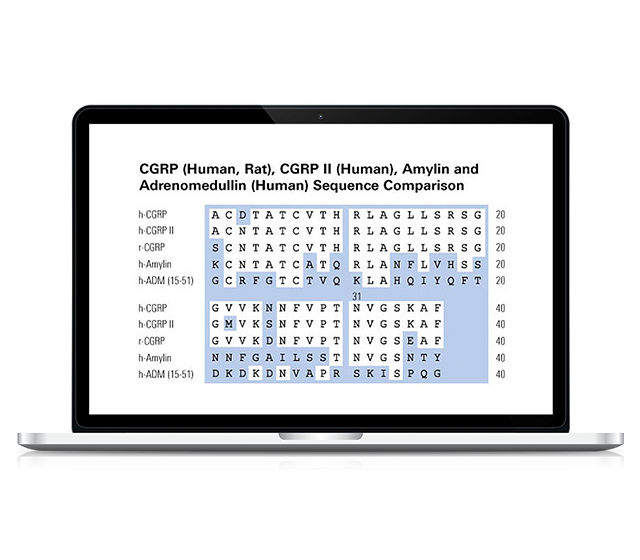Adrenomedullin Peptides
Role of Adrenomedullin
It plays an important role in physiological regulation of circulation, having a potent hypotensive effect when infused into circulation.
It increases cardiac contractility, dilates coronary arteries and modulates stretch-induced ANP (atrial natriuretic peptide) release.
AM is up-regulated under various pathophysiological conditions, such as myocardial ischemia, systemic inflammatory response syndrome, hemorrhagic and endotoxic shock, chronic hypotension in hemodialysis, cirrhosis and pulmonary hypertension.
References
- Prigent, M. et al. J Cell Biol 163, 1111 (2003)
- Mittra, S. et al. Am J Physiol Heart Circ Physiol 286, H1034 (2004)
- Champion, HC. et al. Am J Physiol 272, R234 (1997)
- Hay, DL. et al. Br J Pharmacol 140, 477 (2003)
- Kinnunen, P. Adrenomedullin as a Regulator of Cardiac Function. Oulu Finland (2000)
- Ziolkowska, A. et al. Int J Mol Med 11, 613 (2003)
- Nishimatsu, H. et al. Hypertens Res 26 Suppl, S79 (2003)
- Hyvelin, JM. et al. J Card Surg Jul, 17328 (2002)
- Kinnenun, P. et al. Biochem Biophys Res Commun 192, 553 (1993)
- Mahata, M. et al. Hypertension 32, 907 (1998)
More about Adrenomedullin
Adrenomedullin (AM) is a 52 amino acid vasoactive peptide discovered in 1993.
Member of the calcitonin family of peptides, it shares sequence homology with the calcitonin gene-related peptide (CGRP) and peptides from the pancreatic amylin family.
cDNA sequences of rat, pig and human reveal that preproadrenomedullin consists of 185 amino acids, with 3 sites of paired basic amino acids as targets for prohormone-processing proteolytic cleavage.
AM is produced by several tissues, including adrenal medulla, lung, kidney, retinal pigment epithelium, neurons, astrocytes, vascular endothelium, vascular smooth muscle cells and heart.
